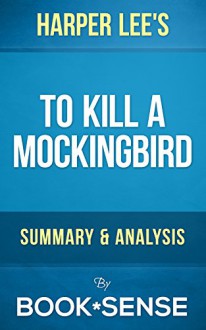To Kill a Mockingbird: (Harperperennial Modern Classics) by Harper Lee | Summary & Analysis
To Kill a Mockingbird: by Harper Lee | Summary & Analysis Harper Lee’s classic is read by millions of school children each year—but that does not mean that it has nothing to say to older readers. Far from it: presenting a gripping story of prejudice and non-understanding at work in 1930’s...
show more
To Kill a Mockingbird: by Harper Lee | Summary & Analysis
Harper Lee’s classic is read by millions of school children each year—but that does not mean that it has nothing to say to older readers. Far from it: presenting a gripping story of prejudice and non-understanding at work in 1930’s Alabama, it remains a rich text for readers of all ages, speaking to peculiarly American iterations of universal human failings. The novel has been a staple of literary education in the United States for some time, offering a point of common. It is set in the fictional town of Maycomb, Alabama, in the middle of the 1930s.
The novel narrates a span in the life of Scout Finch during which she, her family and friends and the larger community in which they exist. The children try to untangle the mystery of Boo Radley; the adults attempt to negotiate the miscarriage of justice perpetrated on Tom Robinson by a court system that relies upon the people who compose its juries being unbiased. Widely read as an indictment of racism and complacency in the face of it, the novel provides a telling portrait of the Deep South of the United States in the years of the Great Depression, showing parts of the American character that are unfortunate to recall—and even more fortunate to see endure.
This companion also includes the following:
• Book Review
• Story Setting Analysis
• Story elements you may have missed as we decipher the novel
• Details of Characters & Key Character Analysis
• Summary of the text, with some analytical comments interspersed
• Thought Provoking /or Discussion Questions for Readers & Book Clubs
• Discussion & Analysis of Themes, Symbols…
• And Much More!
This Analysis of the novel fills the gap, making you understand more while enhancing your reading experience.
show less

